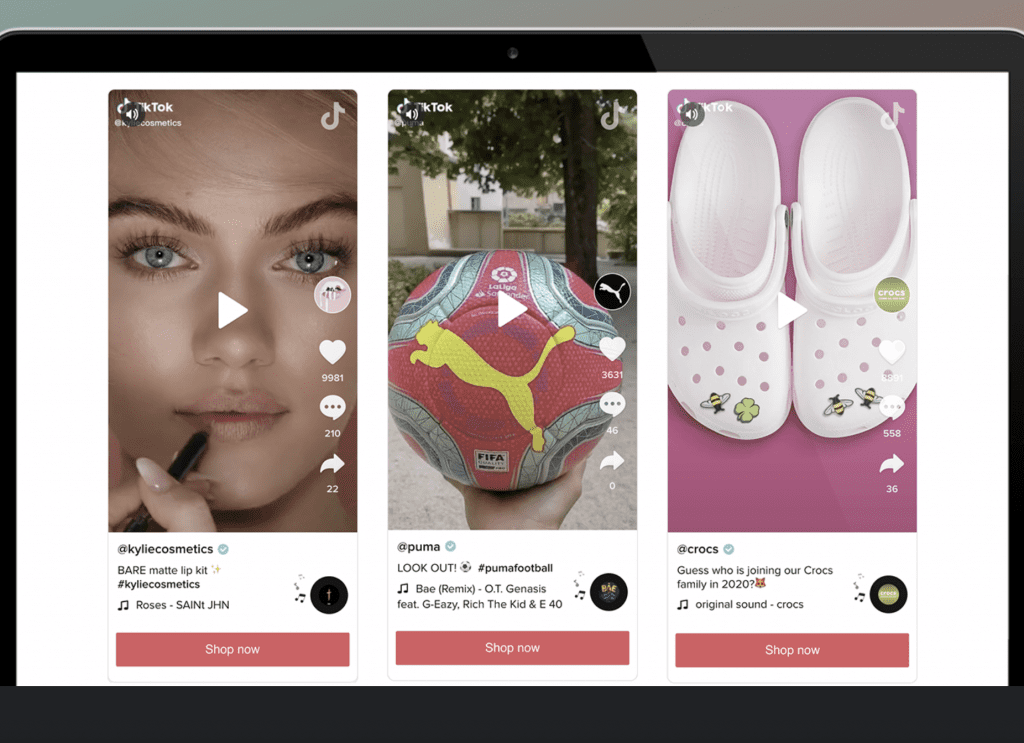Forget traditional e-commerce shopping for a moment. Social commerce – which sees consumers purchase products and services online through social media platforms like Facebook, WeChat, TikTok, Zalo, and Line – is consistently proving to be the model of the moment and seemingly, of the future, as well, as consumers consistently adopt new ways of shopping, largely led by advances coming from Chinese tech titans. While some super-apps integrate payment and logistics into a single app, others serve as a platform for connecting users and their offerings to buyers by way of third-party services that handle the payment and logistics. Simultaneously, other “s-commerce” platforms have sprung up, further shifting the status quo in the e-commerce space, and focusing on combining social media networks with e-commerce functionality, where Key Opinion Leaders and influencers can promote products.
No small shift, according to Econsultancy, Magento and Hootsuite’s 2019 “State of Social Commerce in Southeast Asia” report, consumers routinely find social media to be highly influential in their buying decisions. 44 percent of social shoppers said that they had made three or more online purchases in the past month after seeing social media posts or ads. A subsequent study conducted by PWC found that there has been increasingly higher usage of social media platforms among consumers who are looking to make purchases. And due to the pandemic and the resulting social isolation that has come with often-lengthy lockdowns, the adoption of social media for communication and shopping has accelerated even further. 58 percent of consumers increased their social media consumption, per PWC, with 86 percent of those consumers likely to maintain such increased levels of use even after COVID isolation measures have worn off.
The enduring rise of social media usage and shifting shopping habits has brands clamoring to meet consumers where they are. In Indonesia, for instance, Paypal reported that 80 percent of online merchants sell through social e-commerce. In a report of its own, McKinsey revealed that the social commerce market is at least a $3 billion market in Indonesia, with users increasingly buying products via BlackBerry Messenger, Facebook, Instagram, Line, and WhatsApp. Meanwhile, in the U.S. social commerce sales surged by 38.9 percent in 2020, according to EMarketer, “thanks mainly to the pandemic-driven boom in e-commerce and increased social media consumption.”

On a global basis, Grandview Research put the value of the global social commerce market size at $474.76 billion in 2020, with the research firm stating that it expects the market to expand at a compound annual growth rate of 28.4 percent from 2021 to 2028.
More than Media-Sharing
Although many of the aforementioned platforms started as communications or media sharing platforms, most have evolved towards super-apps where users can also buy, sell, and transact within one app. TikTok, for instance, recently launched its marketplace in Indonesia, while Facebook, Instagram, Zalo, and Line have also integrated in-app shopping and transactions. YouTube plans to eventually incorporate e-commerce elements, as global platforms look to copy China’s success in the video marketing and livestream selling space, with leaders including KuaiShou, Taobao Live, Douyin (i.e., TikTok) and others.
A crucial factor for the staggering success of social media platforms in e-commerce in China – where social commerce sales totaled approximately $186 billion in 2019, nearly ten times the number of sales in the U.S., which reached $19.42 billion – is that they are more multifunctional and have a broader purpose for their users.
Take Pinduoduo as an example. The Shanghai-based platform reached $251.76 billion in e-commerce revenues in 2020 thanks to its harnessing of popular social commerce elements, including social shopping, in furtherance of which users can shop in tandem with – and seek real-time feedback and recommendations from – their friends and family. They also tap into discounts on products by way of the group-buying model. Pinduoduo’s meteoric rise has been helped along by WeChat – the most popular social media platform in China, with upwards of 1.2 billion monthly active users, as it enables users to proactively encourage friends to join their group-shopping team.
Now consider WeChat. The most popular social media app in China, WeChat has developed an array of new functions in the past ten years, including – but not limited to – WeChat Pay, Mini-programs, Moments Ads, and Short video accounts. The mini-programs can function as standalone e-commerce stores that do not require installation to use. Meanwhile, Moments and Short videos can be used to promote products to WeChat “friends” and the public that follow these accounts. And still yet, payments can be made seamlessly through the WeChat Payment function – and Chinese consumers trust and use WeChat pay for payments on a daily basis, meaning that there are no barriers from payment trust issues like can occur while giving payment information to third parties. Under this ever-evolving WeChat’s ecosystem, the whole social commerce journey is much easier for customers to make orders and interact directly with brands.
Risks & Rewards
As consumers continue to flock to social media for networking, entertainment, and increasingly, shopping, the opportunity for social media as a sales channel cannot be ignored. At the same time, neither can the risk of infringement and counterfeiting, which have saturated social media sites. Like traditional marketing, counterfeiters funnel sales by creating accounts across multiple platforms and attempting to direct consumers to external sites; it is common to see such accounts linking a social media reference landing page to other ecommerce or third-party payment sites.
Given the sweeping reach of social media, monitoring for such illicit activities on social platforms is a big challenge. Most social media platforms in Southeast Asia do not require identity verifications, and counterfeiters hide behind a cloak of anonymity to create fake accounts. In a recent disclosure before the U.S. House Committee on Energy and Commerce, Facebook, Inc. revealed that it took down 1.3 billion fake accounts over a three-month period this year.
Counterfeit sellers also aim to avoid detection, and thus, make the fight against them more difficult, by creating private networks of sales and distribution through closed groups, such as those on Facebook. Groups give these counterfeit-selling networks some form of control as they can set it up so that new members are required to answer a series of questions before being accepted. Administrators can also set the group’s visibility to “hidden,” thereby, completely hiding a group from searches by the general public, and instead, recruiting members through targeted messages.
On a global level, developments in data protection regulation and privacy law have made it more difficult for law enforcement and investigators to collect data on online users. On the other hand, China does require Real Name Identification – although individual identities behind accounts are not made public and the usage of others’ identities is common to get around blocks and bans.
China-Specific Enforcement Efforts
As China continues to be a leading manufacturer and supplier to overseas markets, including but not limited to Southeast Asia, with its B2C and B2B platforms acting as crucial elements in the distribution chain, an enforcement strategy that does not specifically consider China would be woefully deficient. Against that background, here are four points to keep in mind …
1. Verified official account
Having an official verified account on the platform lets you fill any void left by successfully enforcing counterfeit sellers immediately. It could also open doors for more brand protection co-operation activities between brand owners and the platform.
2. Mapping and monitoring
Mapping and monitoring a platform enables rights holders to track and focus their resources on critical infringers while keeping a tab on the general health of the platform. The simplest way to do this is by periodically searching sets of popular keywords and capturing the data manually. Ideally, brands want to capture information relating to the stores such as reviews, sales volumes, discounts rate and related networks.
To scale up the process, brands can use scrapping tools that crawl the web automatically for data. It is important to note that data scraping can be a gray area, depending on its usage. For instance, however convenient, data scrapers have limitations. Many platforms now have anti-scraping mechanisms – social apps, such as Facebook and Instagram prohibit data mining activities and have anti-bot systems in place. Alibaba is continuously updating its defenses as hundreds of thousands of bots are crawling it every day to obtain valuable data which can be used for marketing insights or infringement detection.
It is also relatively complex to monitor media streaming platforms such as live auctions on Facebook or a video stream on Tik Tok. By the time rights holders become aware of such livestream flash sales on such platforms, the damage can already have been done – and evidence that it occurred for the purposes of enforcement can be challenging to obtain.
3. Online enforcement
With a monitoring system in place, brands can then consider enforcement. Most platforms have processes in place for the brand owner to report and enforce on IP infringements. Facebook, Instagram, and Twitter have publicly accessible channels where rights holders can report infringing content. WeChat, Line, and Zalo allow users to report infringements through the app. WeChat also has a dedicated Brand Protection Platform where brand owners can register and file complaints (and receive “clues” from users who report others), while Line users are able to report through an online form.
4. Beyond online enforcement
For platforms without a robust seller verification process in place, infringers can repeatedly create new accounts following any enforcement action. One of the biggest challenges of online enforcement is ensuring that infringers hiding behind the veil of anonymity are taken down permanently. One way to do this is to convert key online targets into offline targets for further investigations and take legal actions. Looking beyond investigations and enforcement, brand owners should also try to engage social media platforms and build up proactive brand protection measures and take joint enforcement actions against counterfeiters. The lawsuit that Facebook and Gucci jointly filed has demonstrated that social media platforms and brand owners are willing to take coordinated actions against counterfeiters.
Ultimately, social media has evolved from being a simple media sharing and communications platform to producing super-apps that rival and/or have overtaken e-commerce sites in some instances. In China, a new draft regulation argues that such social media platforms with e-commerce functions should be held to the same regulations as e-commerce platforms since they provide merchants with order generations and transactional services. In reality, social media platforms functioning as e-commerce often face less scrutiny than traditional e-commerce platforms. Therefore, it is crucial for brand owners to take precautionary and preventive actions.
James Godefroy is a senior consultant at Rouse. Benjamin Li is an IP consultant at Rouse.













